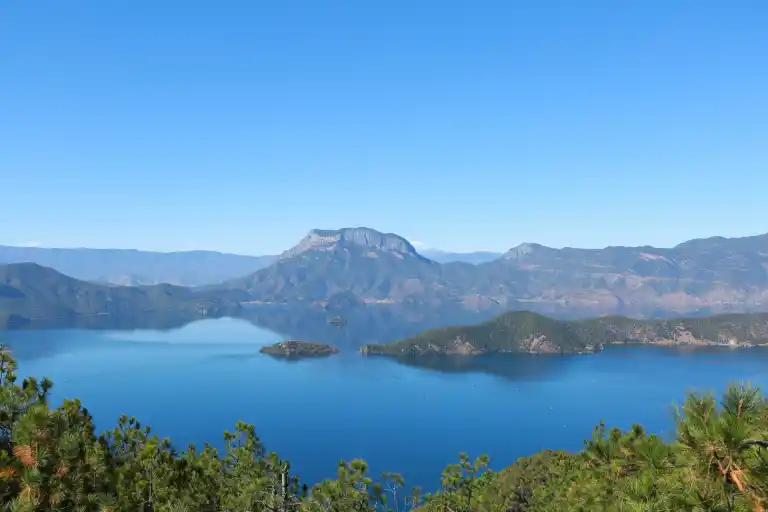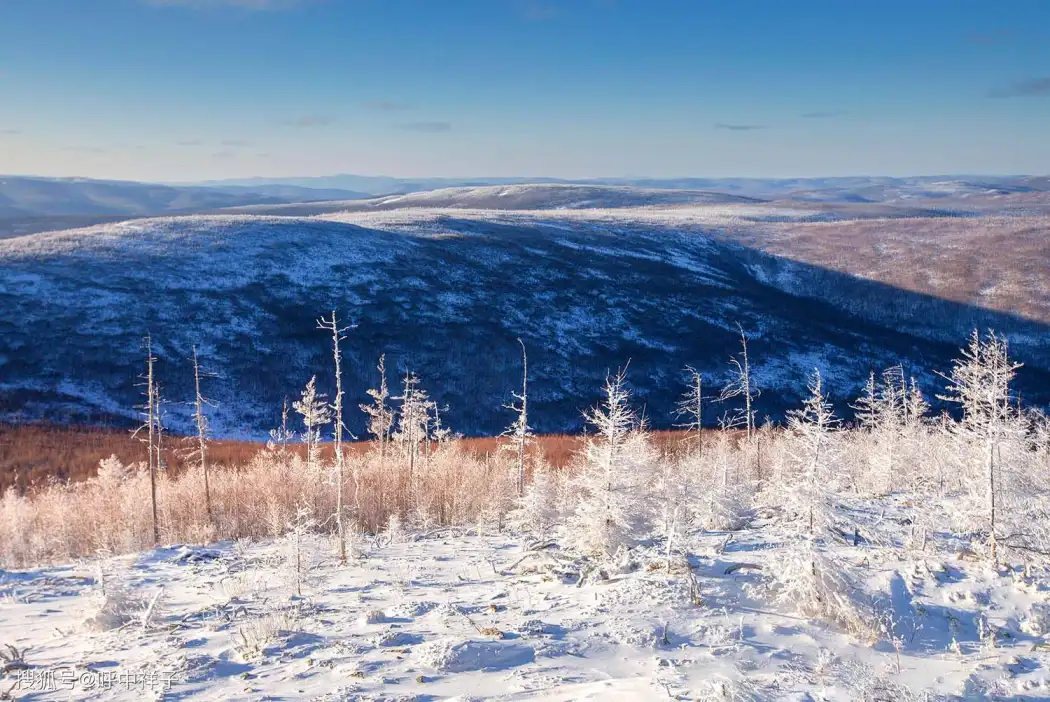
Daxing'anling: China's Pristine Wilderness
1. Location and Overview 🌍
Location: The Greater Khingan Range (大兴安岭), also known as Daxing'anling, is located in the northeastern part of China, primarily within the Heilongjiang (黑龙江) and Inner Mongolia (内蒙古) provinces.
Overview: The Greater Khingan Range is a vast, forested mountain range that stretches over 1,200 kilometers (745 miles) from northeast to southwest. Covering an area of approximately 120,000 square kilometers (46,332 square miles), it is one of China's most significant natural landscapes. The range is renowned for its dense forests, diverse wildlife, and dramatic seasonal changes, making it a paradise for nature lovers and outdoor enthusiasts. The area is also home to various ethnic minority groups, including the Evenki and Daur people, adding a rich cultural layer to its natural beauty.
2. Unique Features 🌟
- Biodiversity: Home to over 300 species of birds, 100 species of mammals, and countless plant species, the Greater Khingan Range is a biodiversity hotspot.
- Forests: The area boasts expansive forests dominated by larch and pine trees, providing a stunning backdrop year-round.
- Wildlife: Spot rare and endangered animals like the Siberian tiger (东北虎) and the Amur leopard (远东豹).
- Natural Hot Springs: Enjoy the therapeutic benefits of natural hot springs scattered throughout the region.
- Endless Hiking Trails: Numerous trails offer a variety of hiking experiences, from easy walks to challenging climbs.
- Winter Wonderland: The region transforms into a snowy paradise in winter, perfect for skiing and snowboarding.
3. Seasonal Changes 🌷🌞🍁❄️
Spring (March to May): Witness the forest awakening with blooming flowers and budding trees. It's a great time for birdwatching and hiking in mild temperatures.
Summer (June to August): Enjoy warm weather, lush greenery, and the best conditions for outdoor activities like camping, fishing, and hiking.
Autumn (September to November): Experience the breathtaking fall foliage as the forest turns into a mosaic of red, orange, and yellow hues. This season is ideal for photography and scenic drives.
Winter (December to February): The region becomes a winter sports haven with heavy snowfall. Skiing, snowboarding, and snowshoeing are popular activities during this time.
4. Best Time to Visit ⏰
The best times to visit the Greater Khingan Range are in late spring (May) and early autumn (September to October). During these periods, the weather is pleasant, and the natural beauty is at its peak with blooming flowers or vibrant fall colors.
5. Travel Tips 🧳✈️
- Clothing: Dress in layers to accommodate temperature changes and bring waterproof gear, especially in summer and fall.
- Accommodation: Book your stay in advance, especially during peak tourist seasons.
- Local Guides: Consider hiring a local guide to enhance your experience and gain deeper insights into the area's natural and cultural heritage.
- Health Precautions: Carry insect repellent and a basic first-aid kit, as you might encounter mosquitoes and other insects.
- Respect Nature: Stick to marked trails to avoid disturbing wildlife and protect the environment.
- Language: Learn a few basic phrases in Mandarin or use a translation app to communicate with locals, especially in rural areas.
6. Cultural Significance 🎭🎶
The Greater Khingan Range holds deep cultural significance, especially for the indigenous Evenki and Daur people. These ethnic groups have lived in harmony with the forest for centuries, relying on it for sustenance and cultural practices. Traditional activities like reindeer herding, hunting, and shamanistic rituals are still practiced, offering a unique glimpse into their way of life.
7. Tourist Attractions 🏞️📸
- Arxan National Forest Park (阿尔山国家森林公园): Known for its volcanic landscapes, hot springs, and pristine lakes.
- Mohe County (漠河县): The northernmost point of China, famous for its polar day phenomenon in summer and the breathtaking Northern Lights in winter.
- Yichun City (伊春市): Offers extensive forests and the stunning Meixi National Forest Park (美溪国家森林公园).
- Shiwei Russian Ethnic Township (室韦俄罗斯民族乡): A picturesque village reflecting Russian cultural influences.
- Erguna Wetlands (额尔古纳湿地): One of the largest wetlands in Asia, ideal for birdwatching and nature photography.
- Daxing'anling Moerdaoga National Forest Park (大兴安岭莫尔道嘎国家森林公园): Features vast forests, rivers, and rare wildlife.
- Zhalantun City (扎兰屯市): Offers beautiful natural scenery, including the Longzhu Gorge (龙珠峡).
- Genhe Wetland Park (根河湿地公园): Known for its serene landscapes and diverse flora and fauna.
8. Nearby Attractions 🗺️
- Hulunbuir Grassland (呼伦贝尔草原): Located to the east, this vast grassland is perfect for horseback riding and experiencing traditional Mongolian culture.
- Qiqihar (齐齐哈尔): Home to the Zhalong Nature Reserve (扎龙自然保护区), known for its red-crowned cranes.
- Harbin (哈尔滨): Famous for its annual International Ice and Snow Sculpture Festival and Russian architecture.
9. How to Get There ✈️🚗
- Air: The nearest major airport is Harbin Taiping International Airport (哈尔滨太平国际机场), with domestic and some international flights. From Harbin, you can take a regional flight or train to smaller cities like Yichun or Mohe.
- Train: There are direct trains from major cities like Beijing (北京) and Harbin (哈尔滨) to cities within the Greater Khingan Range, such as Yichun (伊春) and Hailar (海拉尔).
- Bus: Long-distance buses connect the region with neighboring provinces and cities.
- Car: Renting a car provides the most flexibility to explore the range at your own pace, especially for reaching remote areas.
10. Practical Information 💼💰
- Entrance Fees: Varies by location, typically ranging from 20 to 100 RMB (approximately 3 to 15 USD).
- Operating Hours: Most parks and attractions are open from early morning (around 8:00 AM) to late afternoon (around 5:00 PM).
- Facilities: Tourist areas generally offer basic facilities, including restrooms, visitor centers, and food vendors. For remote areas, it’s advisable to carry your own supplies.
11. Local Cuisine 🍲🥢
- Grilled Fish (烤鱼): Freshly caught fish from local rivers, grilled to perfection.
- Wild Mushroom Dishes (野生蘑菇): The region is rich in wild mushrooms, often featured in soups and stews.
- Deer Meat (鹿肉): A specialty in the region, prepared in various traditional ways.
- Forest Berry Desserts (森林浆果甜点): Made from the abundant wild berries found in the forests.
- Northeastern Dumplings (东北饺子): Hearty dumplings filled with meat and vegetables, a staple in the local diet.
- Smoked Reindeer Meat (熏驯鹿肉): A traditional delicacy among the Evenki people.
12. Precautions to Take ⚠️
- Weather Preparedness: Be prepared for rapid weather changes, especially in higher elevations. Bring appropriate clothing and gear.
- Health and Safety: Stay hydrated and protect yourself from sun exposure. Drink bottled or purified water and avoid uncooked food.
- Wildlife Awareness: Do not feed or approach wildlife. Follow local guidelines to ensure your safety and the animals' well-being.
- Cultural Respect: Respect local customs and traditions, particularly when visiting indigenous communities. Dress modestly and ask for permission before taking photos.
- Environmental Protection: Help preserve the natural beauty by not littering and following the "Leave No Trace" principles.
13. Conclusion 🌟
The Greater Khingan Range offers an unparalleled adventure for those seeking to immerse themselves in China's natural and cultural richness. From its towering forests and diverse wildlife to the unique traditions of its indigenous peoples, this region provides a truly unforgettable travel experience. Plan your trip to the Greater Khingan Range and discover the majestic beauty and serene tranquility of one of China's most remarkable landscapes.


















Comments
Leave a reply